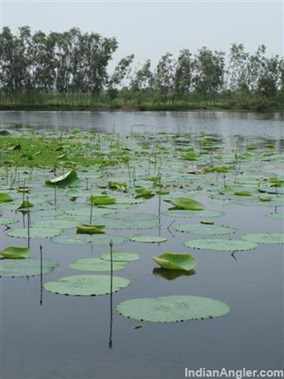Biological Clock Disturbed
The effects of changes in animal life cycles due to global warming are becoming clearly visible in air, land and water creatures. It has caused changes in their biological clock, which are unnatural and unlike than their usual activities of reproduction and habitation.
By Dr. Raza H. Tehsin and Arefa Tehsin
Observations on the changes in animal behaviour due to global warming this year.
 The effects of changes in animal life cycles due to global warming are becoming clearly visible in air, land and water creatures. It has caused changes in their biological clock, which are unnatural and unlike than their usual activities of reproduction and habitation.
The effects of changes in animal life cycles due to global warming are becoming clearly visible in air, land and water creatures. It has caused changes in their biological clock, which are unnatural and unlike than their usual activities of reproduction and habitation.
Vinod Singh of Neemdi had also contributed in our observations and study of the behavioural changes in birds, snakes and fish.
For example, four species of murrel (Chenna species) are found in Udaipur district. Murrel is a kind of fish which can breathe in water as well as take air directly from the atmosphere.
A remarkable trait in murrel is that it makes its nest in underwater weeds, plants or some sheltered corner and lays eggs there.
In the rivers, it lays eggs between May and June. During this time the force of water is less and the eggs don’t get carried away in the current. As the danger of eggs flowing away is lesser in lakes, murrel breeds during July to August as well. Both male and female guard the eggs.
Once the eggs are hatched, the male swims around the brood and the female below to avoid other fish from attacking the fingerlings. Murrel protect their offspring ferociously.
They generally prefer shallow waters with moss and weeds. At short intervals brood comes to the surface to take air. Till the time they grow up, both the parents look after them. Another intriguing fact is that the parents keep devouring the fingerlings now and then. Rest of the times they sustain themselves on frogs, small fish and other water creatures.
Global warming is upsetting the biological clock of different creatures. Murrel’s behaviour has also been affected by it to a great extent. Their breeding season is over, and yet not only do they continue to lay eggs in River Chambal and its tributaries this year but have also have been observed at many places with their broods.
In the same context, in the region of Chambal River in Rajasthan, the migratory duck pintail comes from north – the cold region of Antarctic – in the start of October. This year it was seen in large numbers in the month of September itself.
Peacock and grey partridge, whose chicks are seen from February to July, have started to breed again in September and their chicks can be seen at this time of the year. There are mothers with semi-adults and baby chicks, both together.
The temperature and humidity is so high for the reptiles that the snakes have begun to breed again. Especially some cobras, kraits and rat snakes were seen in pairs and seem ready to attack. Not only this, there has been a rise in snakebites also.
When global warming is disturbing the biological clock of animals to this extend, it is essential to study its effects on humans.
To join us on Facebook Click Here and Subscribe to UdaipurTimes Broadcast channels on GoogleNews | Telegram | Signal


